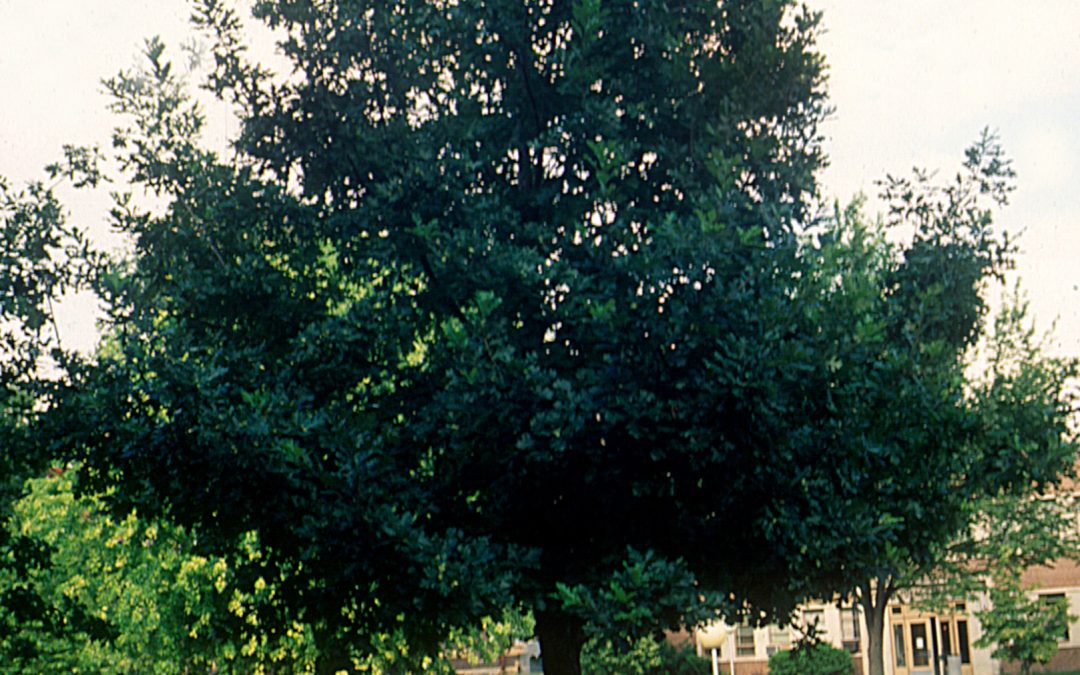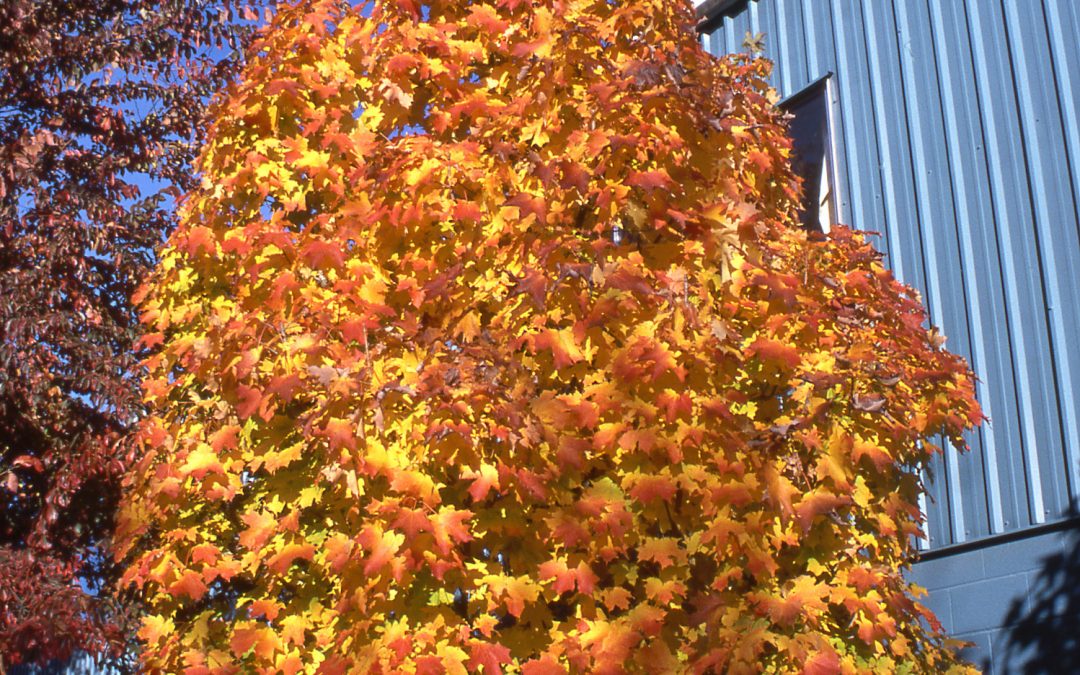
An outstanding durable hardwood to have in your landscape is the Prairie Stature Oak. Pyramidal in shape and quite dense in form, this shade tree will reach a height of 30-40’ with a spread of about 25-30’. In the spring and summer, the leathery lobed leaves are emerald-green changing to different shades of reddish purple in the fall. Fairly tolerable to most soil conditions, the Prairie Stature should only be planted in areas receiving full sun.

Want your cake and be able to eat it too? With the Raspberry Splash Lungwort, you can do just that. Most homeowners have at least one area that is just too shady for growing anything colorful and often resort to planting hostas. Now you can mix it up as this perennial does best in shade. This variety of lungwort has sharply pointed green foliage with silverish spots and grows somewhat upright reaching about 12” H x 12-15” W and. Late spring, clusters of small raspberry coral and purplish bell-shaped flowers appear adding even more flair. Plant in a grouping or with other shade loving perennials like astilbe or hostas.

Searching for a deer resistant shrub that will break up the formality of the landscape while adding fragrance and color? The Legend of the Fall bottle brush is a native medium upright shrub that will grow about 4-5’ H x 4-5’ W and will have fragrant white blooms in the spring and a beautiful mixture of red and orange leaves in the fall. Although preferring at least part sun to sun for better flowering and color, this shrub is shade tolerant and makes a good solution for shadier areas or under trees. Once established, the bottle brush requires little maintenance as it is drought tolerant and shouldn’t be pruned in order to maintain the natural aesthetic of the plant.

Typically, the idea of having a maple tree in a planting bed on the corner of your house or building would be absurd due to the size, but here at Heritage Hill Nursery we did just that. The compact columnar selection of the Apollo Sugar Maple with symmetrical growth and dense branching, only reaching 25’ H x 10’ W is perfect for limited spaces. Lighter color siding will pair nicely with the deep green foliage that will later change into an intense array of brilliant orange, red and golden yellow hues.

The Moonshadow Wintercreeper Euonymus is a versatile, easy-to-grow shrub with striking year-round green and yellow foliage. Rapidly growing to a height of 3 feet and a spread of up to 5 feet, it’s ideal as a ground cover or low hedge. Whether you’re looking to edge your driveway or revamp a retaining wall, this adaptable shrub fits the bill. It thrives in conditions ranging from full sun to partial shade and prefers well-draining soil. While newly planted shrubs should be watered regularly, established plants are drought-tolerant. Optional annual pruning can help maintain its shape.





